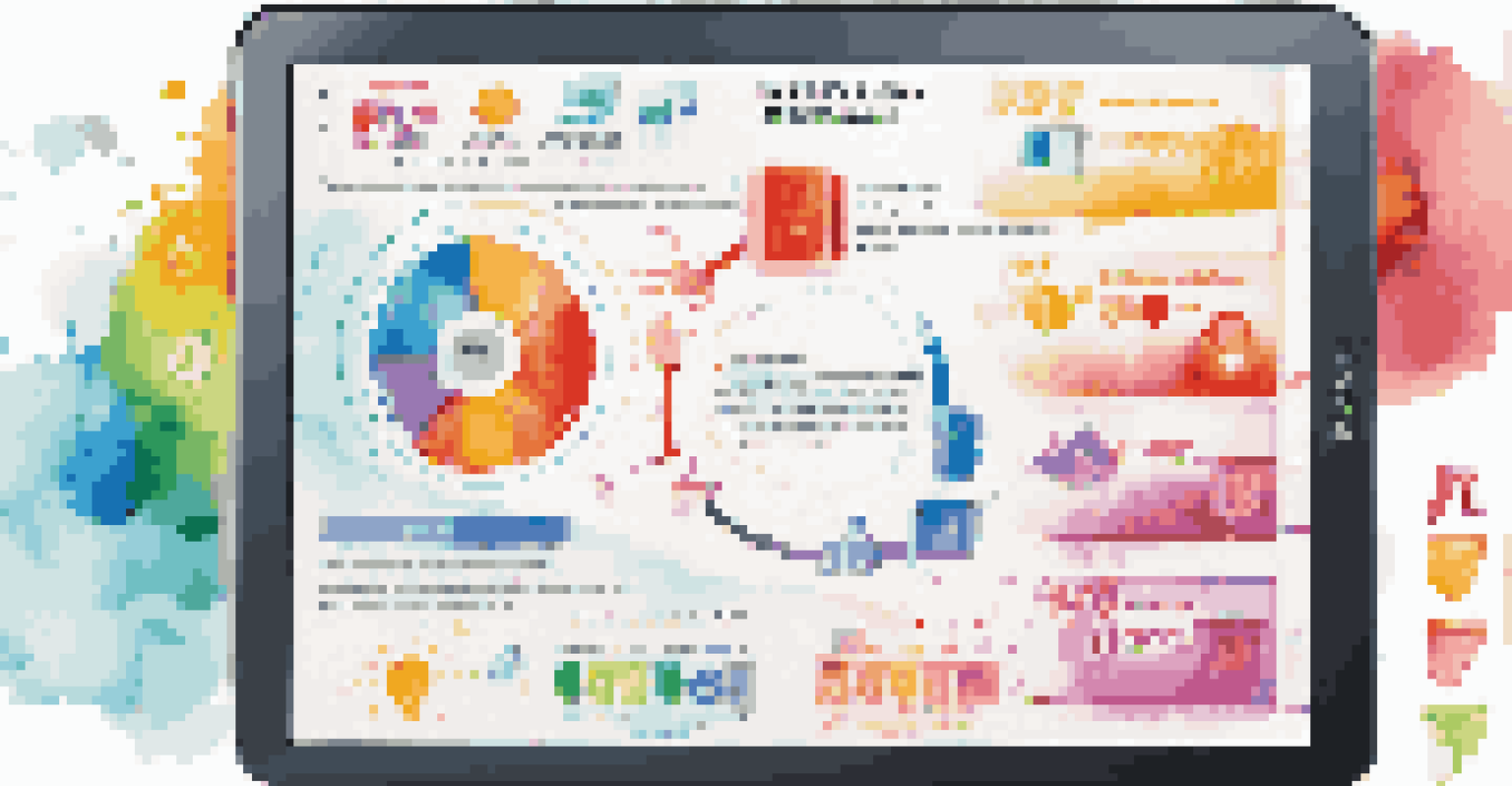Leveraging Microlearning for Effective Knowledge Transfer Processes

Understanding Microlearning and Its Benefits
Microlearning is a focused approach to learning that delivers content in bite-sized chunks, making it easy to digest. This method caters to our increasingly busy lives, allowing learners to acquire knowledge when it’s most convenient for them. By breaking down complex topics into smaller, manageable pieces, microlearning enhances retention and engagement.
The best way to predict the future is to create it.
One of the biggest benefits of microlearning is its flexibility. Learners can access lessons on-the-go, whether they’re commuting, taking a break, or simply waiting for an appointment. This adaptability means knowledge can be transferred seamlessly, leading to better outcomes in training and development.
Moreover, microlearning encourages a culture of continuous learning. When learners can quickly revisit materials, they are more likely to engage with the content regularly. This ongoing interaction not only reinforces knowledge but also fosters an environment where knowledge transfer becomes part of everyday practice.
Microlearning Techniques for Effective Transfer
There are several techniques to implement microlearning effectively, such as video snippets, infographics, and interactive quizzes. Each of these formats allows learners to engage with content in a way that suits their preferred learning style. For instance, a short instructional video can convey a concept far more engagingly than a lengthy manual.

Another effective technique is the use of mobile apps that deliver notifications for quick learning sessions. These reminders can prompt learners to engage with content at opportune moments, making it easier to incorporate learning into their daily routines. It’s all about making knowledge accessible and manageable.
Lastly, gamification is an excellent way to enhance microlearning experiences. By turning knowledge transfer into a game, you can motivate learners to complete modules and retain information more effectively. Who wouldn’t want to earn points or badges while learning?
Creating Engaging Microlearning Content
To create engaging microlearning content, focus on clarity and relevance. Ensure that each module addresses a specific learning objective and is closely aligned with learners' real-world applications. This way, learners can see the value and purpose behind what they’re learning, which enhances motivation.
Learning never exhausts the mind.
Visual elements are also crucial in microlearning. Incorporating images, animations, and graphics can make the material visually appealing and easier to understand. For example, a simple infographic summarizing key points can be far more effective than a block of text.
Finally, invite feedback from learners to continually improve content. Understanding what resonates and what doesn’t allows you to adjust your approach, ensuring that your microlearning modules remain effective and engaging over time.
Integrating Microlearning into Existing Training Programs
Integrating microlearning into your existing training programs can be a game-changer. Start by identifying key areas where knowledge transfer tends to break down. By pinpointing these gaps, you can develop targeted microlearning modules that address specific needs.
Additionally, consider blending traditional training methods with microlearning. For instance, follow up a lengthy workshop with a series of short, on-demand videos that reinforce the concepts discussed. This combination ensures learners can revisit material at their own pace, enhancing retention.
Lastly, ensure that all microlearning content is easily accessible. A centralized platform where learners can find resources quickly will facilitate better usage and engagement. Remember, the easier it is to access learning materials, the more likely they are to be utilized.
Measuring the Impact of Microlearning
To understand the effectiveness of microlearning, it's essential to measure its impact on knowledge transfer. Start by setting clear objectives and key performance indicators (KPIs) that align with your training goals. This could include metrics like completion rates, knowledge retention, and even application of skills in the workplace.
Surveys and assessments can also provide valuable insights into how well learners are grasping the material. By gathering feedback on their learning experiences, you can identify areas for improvement and refine your microlearning strategies. It’s a continuous loop of enhancing learning based on direct input.
Finally, track long-term retention of knowledge. By evaluating how much information learners recall over time, you can gauge the sustainability of microlearning’s impact. This not only helps in demonstrating value but also in justifying the investment in microlearning initiatives.
Overcoming Challenges in Microlearning Implementation
While microlearning offers many benefits, implementing it isn’t without challenges. One common hurdle is resistance to change, as learners may be accustomed to traditional training methods. To address this, communicate the advantages clearly and provide support during the transition.
Another challenge could be the creation of high-quality content. It requires time and resources to produce engaging microlearning materials. Consider leveraging existing content and repurposing it into microlearning formats or involving subject matter experts to streamline the process.
Lastly, ensure that your technology infrastructure is capable of supporting microlearning initiatives. This includes having a user-friendly Learning Management System (LMS) that can host diverse content formats and track learner progress effectively. A solid tech foundation will make a world of difference.
Future Trends in Microlearning and Knowledge Transfer
As technology evolves, so too will microlearning and its role in knowledge transfer. One emerging trend is the use of artificial intelligence to personalize learning experiences. AI can analyze learner behavior and tailor content to meet individual needs, making microlearning even more effective.
Virtual and augmented reality are also expected to play a significant role in future microlearning initiatives. Imagine learners being able to immerse themselves in a virtual environment to practice skills in real-time. This interactive approach can enhance engagement and retention.

Lastly, the importance of social learning will continue to rise. Encouraging peer-to-peer interactions and discussions around microlearning content can create a collaborative learning environment. After all, sharing knowledge is one of the most effective ways to reinforce learning.